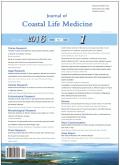Antiplasmodial and antipyretic effects of ethanol root extract and fractions of Setaria megaphylla (Steud) T. Dur and Schinz (Poaceae)
引用次数: 3
Abstract
Interest towards scientific investigation of plants used in traditional medicine to treat diseases such as malaria, fevers and pain has been rekindled and renewed with tremendous vigour. The Ibibio people in Southern Nigeria have for ages been using different plants and their parts to treat malaria and other fevers even in the face of available conventional drugs. The use of Setaria megaphylla (S. megaphylla) has been done without much documentation[1]. S. megaphylla is an erect perennial broad-leafed bristle grass, canelike with very coarse and robust roots mostly found along rivers, areas with plenty of moisture and in tropical and subtropical Africa with high rainfall[2], e.g. Nigeria. In Southern Nigeria, Ibibio Tribe in Akwa Ibom State used it for treatment of malaria, pain, fevers and diabetes[1]. The in vitro[3] and in vivo[1] researches have shown that S. megaphylla leaves have antiplasmodial effects. The results of phytochemical screening revealed the presence of flavonoids, deoxy-sugars, terpenes, saponins, tannins, anthraquinones and cardiac glycosides in the root extract[1]. Data from GCMS studies of n-hexane fraction of the leaves showed that it contained components such as 8,11,14-eicosatrienoic acid (Z,Z,Z), phthalic acid, diisooctyl ester, vitamin E, γ-elemene, Urs-12-ene, bicyclogermacrene, α-muurolene, germacrene-A, and guaiol among others[4]. The cytotoxic, immunomodulatory and antileishmanial activities of the ethanol leaf extract of S. megaphylla have been reported[4]. There is little available information about the activities of S. megaphylla roots. Therefore, the present research aimed to evaluate and provide information on the medicinal potentials of S. ARTICLE INFO ABSTRACT大叶狗尾草和党参乙醇根提取物及组分的抗疟原虫和解热作用
对传统医学中用于治疗疟疾、发烧和疼痛等疾病的植物进行科学研究的兴趣重新燃起,并以巨大的活力重新焕发。多年来,尼日利亚南部的伊比比奥人一直使用不同的植物及其部分来治疗疟疾和其他发烧,即使面对现有的传统药物。megaphylla (S. megaphylla)的使用文献很少。S. megaphylla是一种直立的多年生阔叶刚毛草,茎状,根粗而粗壮,主要分布在河流沿岸、水分充足的地区以及降雨量大的热带和亚热带非洲,如尼日利亚。在尼日利亚南部,阿夸伊博姆州的伊比奥部落用它来治疗疟疾、疼痛、发烧和糖尿病。体外[3]和体内[1]研究表明,巨葡萄叶具有抗疟原虫作用。植物化学筛选结果显示,根提取物[1]中含有黄酮类、脱氧糖、萜烯类、皂苷类、单宁类、蒽醌类和心苷类化合物。正己烷组分的气相色谱分析表明,正己烷组分中含有8,11,14-二十碳三烯酸(Z,Z,Z)、邻苯二甲酸、二异辛基酯、维生素E、γ-榄香烯、ars -12-烯、双环革烯、α-茂烯、革烯- a、愈创酚等成分[10]。巨葡萄叶乙醇提取物的细胞毒性、免疫调节和抗利什曼原虫活性已被报道[10]。关于巨葡萄球菌根的活性几乎没有可用的信息。因此,本研究旨在对其药用潜力进行评价和提供信息
本文章由计算机程序翻译,如有差异,请以英文原文为准。
求助全文
约1分钟内获得全文
求助全文

 求助内容:
求助内容: 应助结果提醒方式:
应助结果提醒方式:


